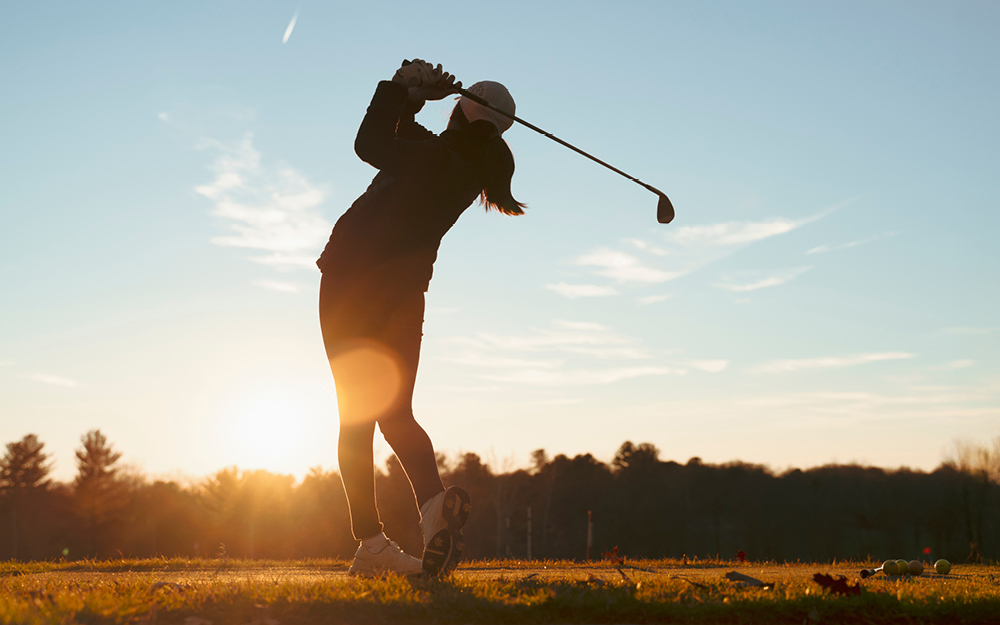While many Australians had the opportunity to enjoy two consecutive long weekends in April, as we move into May the focus is now on the federal election.
The month of April was marked by economic uncertainty and global trade tensions that drove market declines and volatility. These events are anticipated to influence the RBA’s cash rate decisions, as will the recent decline in core inflation to within the target range.
Australian shares slumped in early April but recovered with the ASX 200 up 2.5% by month’s end. Nonetheless, the index is down nearly 1.3% since the start of the year and may fall further according to some commentators. In the United States, the S&P500 regained strength after falling to its lowest level in a year.
Unemployment increased slightly in the latest figures, up by 4.1% and consumer sentiment declined 6% in April, revealing consumer unease about developments in Australia and abroad associated with US tariff announcements.
The International Monetary Fund (IMF) delivered sombre news for Australia, predicting lower growth than forecast earlier this year. Despite the slowdown, the IMF says global growth remains “well above” recession levels.
Market movements and review video – May 2025
Stay up to date with what’s happened in the Australian economy and markets over the past month.
The month of April was marked by economic uncertainty and global trade tensions that drove market declines and volatility.
These events are anticipated to influence the RBA’s cash rate decisions, as will the recent decline in core inflation to within the target range.
Click the video below to view our update.
Please get in touch if you’d like assistance with your personal financial situation.
Scams: knowledge is protection
Scammers operate in an ever-evolving space and the scams of today are far more sophisticated than they have ever been, targeting even the most financially literate individuals.
In addition to the financial impact from a scam, it can affect your mental health as well as damage your reputation, so understanding how scammers operate is the best way protect yourself from falling victim.
A growing trend
The statistics provide a sobering reminder that no one is immune—no matter how experienced or cautious they may be – it can happen at the click of a button.
According to the Australian Competition and Consumer Commission’s (ACCC) Scamwatch, Australians lost an alarming $3.18 billion to scams last year.
The average individual loss from scams is significant, with individual losses rising by more than 50 per cent last year, to an average of almost $20,000.i This is due, in part, to scammers using new technology to lure and deceive victims and it underscores the serious financial toll scams can take.
Some of the most common scams include:
- Investment scams: Investment scams continue to be a major issue, with losses reaching around $1.2 billion in 2024. These scams often involve fraudulent online trading platforms or fake cryptocurrency schemes, designed to lure investors with promises of high returns and minimal risk.
- Impersonation scams: Fraudsters are increasingly using sophisticated tactics to impersonate trusted organisations, such as government bodies, banks, and financial advisers. In 2024, impersonation scams accounted for $700 million in losses, with scammers using fake emails, phone calls, and even text messages to trick victims into revealing sensitive personal information or parting with funds.
- Romance and relationship scams: These scams often involve scammers establishing a personal relationship with victims before manipulating them into sending money. In 2024, these types of scams led to losses of $250 million, highlighting the emotional and financial damage they can cause.
While these figures are shocking, they also reflect the changing nature of scams. Scammers are no longer relying on clumsy, obvious frauds. Instead, they are using highly professional methods, often tailored to the specific interests, financial knowledge, and behaviours of their targets.
Why everyone is vulnerable
As scammers become more creative, even the most experienced and financially literate individuals are at risk. There are several reasons why this is the case.
Sophistication: Scammers now use advanced technology and psychological manipulation to trick their victims. They impersonate respected brands and financial institutions, and they can craft highly convincing emails, websites, and phone calls that look indistinguishable from legitimate communications.
Cryptocurrency and new technologies: The rise of digital currencies and decentralised finance (DeFi) platforms has created new opportunities for scammers to exploit. These markets are largely unregulated, making them more vulnerable to exploitation by criminals.
Deepfakes: Scammers are increasingly using deepfake technology to make their fraudulent schemes more convincing and harder to detect. By creating hyper-realistic videos or audio recordings, they can impersonate trusted individuals, such as company executives, colleagues, or even loved ones, to manipulate victims to respond to requests for urgent assistance or money. This manipulation of digital media makes it much more difficult for victims to distinguish between what’s real and what’s fabricated.
Protecting yourself
Despite the growing sophistication of scammers, there are steps you can take to protect yourself. It’s crucial to stay alert and use a combination of scepticism, knowledge, and due diligence.
Be cautious when receiving unsolicited offers or requests, whether by phone, email, or social media. If you weren’t expecting to hear from a company or individual, don’t rush to react. Don’t click on links. Take a step back and verify the legitimacy of the contact by using an email or contact number that you locate online. Always verify account details this way before transferring any money.
Scammers are constantly evolving their tactics, so it’s crucial to stay informed. Regularly educate yourself on the latest scam trends and familiarize yourself with common warning signs. Agencies like Scamwatch provide ongoing updates and resources for identifying and reporting scams.
The evolving nature of financial scams means that it’s not enough to simply be cautious; you need to stay proactive. If you’re unsure whether an opportunity is a scam or simply want a second opinion on a financial matter, we’re here to help.
Source for all scam statistics in this article: https://www.scamwatch.gov.au/research-and-resources/scam-statistics
i https://www.scamwatch.gov.au/research-and-resources/scam-statistics
5 steps towards a financially fit retirement
If retirement is just around the corner, the current financial climate may make you feel a little uneasy. Watching the markets fluctuate might leave you worrying about whether your superannuation will be enough to see you through.
It’s not a time for hasty moves, though.
If you are concerned a calm review of your current portfolio and investment strategy may be helpful.
After all, the average Australian spends around 20 years in retirement, so it’s important to create a retirement strategy that takes account not only the current market conditions but also the risks and opportunities in the years ahead.
As one of the most significant retirement assets, your superannuation needs a carefully considered assessment as you approach any new life stage.
Here are five useful tips to help ease you into the next chapter towards retirement.
1. Review your risk profile and portfolio allocation
Check your super portfolio’s risk profile. Generally speaking, investors take a high-growth approach when they’re younger to take advantage of higher returns, however, as with normal share market cycles, there will be fluctuations in the share market. Having a long-term strategy gives you the time to recover from any market downturns before retirement.
Older investors may prefer a more conservative investment strategy that can help to stabilise returns by potentially protecting super from share market volatility.
2. Calculate retirement expenses
Be realistic about the living expenses you’ll need when you finish working. For some, it may cost less to live in retirement because of reduced expenses such as commuting costs and maintaining a work wardrobe.
On the other hand, you may plan to travel more or buy a new vehicle or renovate your home, so these expenses need to be factored in when working out how much you’ll need.
According to the Association of Superannuation Funds of Australia (ASFA), the annual average budget to maintain a comfortable lifestyle in retirement is $73,077 for a couple and $51,805 for a single person.i
And to maintain a modest lifestyle, ASFA estimates a couple will need $47,470 and a single person will need $32,897. Both estimates assume you already own your own home.
You can find easy-to-use tools on the MoneySmart website to help you work out your budget and also estimate your income from super and the Age Pension.
3. Take action on mortgages and loans
Entering retirement with manageable or small levels of debt can contribute to feeling more financial stable.
If you’ll still be repaying a mortgage after you’ve retired, you could consider downsizing your home or using superannuation funds to pay down the debt, keeping in mind the tax implications and ensuring that you comply with superannuation laws. If you’re considering either of these courses of action, we’d be happy to explain your options and obligations.
4. Check your timing
Understanding when and how you can access your super is important.
You can use your super to fund your retirement when you reach “preservation age”, which is from age 60. You can also use your super to begin a transition to retirement income stream (TRIS) while continuing to work.ii
Alternatively, if you continue working beyond preservation age, you can withdraw your super once you turn 65.
There are also some circumstances in which you can access your super early such as illness and financial hardship, however, eligibility requirements do apply.iii
5. Decide how to withdraw your funds
You may be able to withdraw your super in a lump sum, if your fund allows it. This could be the entire amount you have invested, or you could receive regular payments.
If you ask your fund for regular payments (paid at least once a year), it is known as an income stream and your super account transitions from the accumulation phase – where contributions are made – to a pension.
There are minimum withdrawals that you must make once you commence an income stream from super. For example, for those aged under age 65, a minimum annual withdrawal of 4 per cent of your super balance is required and this drawdown rate increases as you get older.iv
There is a lot to think about as you approach retirement, so if you’d like to discuss your retirement income options, please give us a call.
i ASFA Retirement Standard, December 2024 – The ASFA Retirement Standard – ASFA
ii Super withdrawal options | Australian Taxation Office
iii When you can access your super early | Australian Taxation Office
iv Payments from super, April 2025 – Payments from super | Australian Taxation Office
The aged care Star Ratings are changing – here’s why
Key points:
- Star ratings for residential aged care homes are changing to a redesigned Compliance rating and incorporating care minute targets for Staffing ratings from October 1, 2025
- 271 stakeholders informed the design changes for the aged care Star Ratings system
- You can use the Find a Provider tool on the government website to gauge a provider’s quality of care
The Star Ratings system debuted in December 2022 and it was designed to help families find high-quality aged care providers.
The five-star scale was introduced in response to the Royal Commission into Aged Care Quality and Safety. It was meant to distil complex care metrics — Resident Experience (33 percent), Compliance (30 percent), Staffing (22 percent) and Quality Measures (15 percent) – into a digestible score.
The Australian Government Department of Health and Aged Care unveiled the Design Changes for Star Ratings for Residential Aged Care – Consultation Findings Summary Report.
The new report, informed by 271 stakeholders, such as older people, families, providers and advocates, confronts the widely reported issues with the Star Rating system.
A striking revelation to emerge from the report was the push for providers to be held accountable throughout the system.
Over three-quarters of the cohort demanded a provider’s Compliance rating drop across all its homes if it was issued a formal regulatory notice for significant or systemic non-compliance.
Although 64 percent of providers were supportive of the measure, they cautioned that home-specific factors – like a good manager or unique challenges – often outweigh corporate oversight.
They wanted to draw a line in the sand between small mistakes and major breaches, like neglecting resident safety, to avoid unjust punishment. The report acknowledges this but leaves the concern unaddressed.
Staffing, the lifeblood of aged care, emerges as another flashpoint. The consultation found 75 percent of stakeholders supported a cap of two stars on the Staffing rating for homes failing to meet both care minute targets – hours of direct care mandated per resident.
Among stakeholders, 87 percent expressed support for incorporating the 24/7 registered nursing requirement into the Staffing rating, with many advocating a two-star cap for non-compliance.
Yet, rural providers cried foul: workforce shortages, not negligence, often thwart them. They begged for exemptions, transparently flagged, lest they’re crushed by urban-centric rules.
Beneath these reforms lies a quieter, yet electrifying, thread: data integrity. Stakeholders didn’t just want new rules – they demanded the numbers be trustworthy.
The Staffing rating’s potency, they argued, hinges on accurate, reliable care minute data, especially when self-reported by providers.
Two-thirds insisted Compliance ratings rebound instantly once non-compliance is fixed, not linger in purgatory for 1 – 3 years.
The report’s call for transparent regulatory notices – 75 percent want System Governor notices published, 85 percent demand financial non-compliance hit ratings – doubles down, promising a window into a home’s soul.
The consultation leaves that gauntlet on the table, a test of whether the system can finally earn trust.
Finally, the report hints at a design revolution: half-star ratings and richer data. A narrow 51 percent endorsed half-stars for the Overall Star Rating, envisioning a ladder of incremental progress – 3.5 stars as a reachable rung, not a distant five.
The push for systemic accountability could unmask corporate culprits, staffing reforms might anchor care in reality and data integrity could rebuild faith among stakeholders. However, the report isn’t a one-size-fits-all solution for the sector.
The consultation’s 271 voices have spoken and their hopes and fears are now in the government’s hands. This year has set the stage for mass reforms, intended to make the landscape easier to navigate and safer for those seeking quality care.
Source: Aged Care Guide
Reproduced with permission of DPS Publishing. This article was originally published on https://www.agedcareguide.com.au/talking-aged-care/the-aged-care-star-ratings-are-changing-heres-why.
Important:
This provides general information and hasn’t taken your circumstances into account. It’s important to consider your particular circumstances before deciding what’s right for you. Although the information is from sources considered reliable, we do not guarantee that it is accurate or complete. You should not rely upon it and should seek qualified advice before making any investment decision. Except where liability under any statute cannot be excluded, we do not accept any liability (whether under contract, tort or otherwise) for any resulting loss or damage of the reader or any other person.
Any information provided by the author detailed above is separate and external to our business. Our business does not take any responsibility for any action or any service provided by the author. Any links have been provided with permission for information purposes only and will take you to external websites, which are not connected to our company in any way. Note: Our company does not endorse and is not responsible for the accuracy of the contents/information contained within the linked site(s) accessible from this page.
Understanding your retirement income
Work out how long your super or account-based pension will last
There are many variables that come into play when calculating how long your super or account-based pension will last in retirement, and it can be challenging to figure it out alone.
If you’ve transferred your super to a pension account already, then you can use the MoneySmart calculator to help estimate how long your pension will last. And if you haven’t, we recommend you speak to us as we can discuss with you different considerations that will impact how long your account-based pension will last.
Here are some of the fundamental things you need to know about a couple of other retirement income options.
Account-based pensions
Account-based pensions are a popular retirement income product. They fluctuate in value and are linked to the market, so your investment, and therefore your long-term income, isn’t guaranteed.
How long an account-based pension lasts will depend on:
- the amount of initial capital invested
- the return from the underlying investments
- the amount of fees charged
- how much you withdraw as income each year.
The tax benefits of account-based pension are:
- you don’t pay tax on pension payments from age 60
- you don’t pay tax on investment earnings.
In some cases, the underlying investments for most pension accounts are chosen to minimise fluctuations but still provide a bit of growth.
Defensive assets
These include cash and fixed income. In general, they’re lower risk and provide lower returns over the long term.
Growth assets
These include equities and property. They’re usually open to market fluctuation but tend to provide higher returns over the long term.
Generally, defensive assets provide you with a relatively steady return and, therefore, income. However, some growth assets are usually needed to keep your funds growing during your retirement, so they last longer. With an account-based pension, you can mix defensive and growth assets to a ratio that you’re comfortable with.
Annuities
Some annuities could provide you with regular and guaranteed income for either a fixed period or for life. They are more secure than account-based pensions as your income is guaranteed regardless of what the share market and interest rates do.
The downside is that you’re locked in to the agreed income for the whole term or the rest of your life. If your circumstances change, you generally can’t withdraw a lump sum. A lifetime annuity also has no residual capital value, which means you can’t leave it to someone in your will.
The best of both systems
Continuing to build your investments, including your super funds, is still crucial in retirement. They need to keep growing to ensure your retirement income lasts as long as possible.
This means it becomes increasingly important to protect your super growth funds from market falls while still allowing them to grow if the market goes up.
Other things to consider
Age pension eligibility
When it comes to the Age Pension, there are several rules to determine your eligibility. You can learn more by visiting Services Australia, but some of the basic rules are:
- You must have reached your Age Pension age, which is currently 67.
- You must be a resident of Australia.
- You must pass income and asset tests.
If you don’t meet the income and assets tests to be eligible for the Age Pension, you may be able to access the Commonwealth Seniors Health Card (if you pass an income test). This card provides affordable medicine, bulk billed doctor visits and depending on what state you live in, there may be some other concessions that you’re entitled to. You can find out more from Services Australia.
Speaking to a financial planner
With so many options, it’s a good idea to seek help to ensure you’re investing in a way that suits you. Particularly as there are some more complex considerations, such as tax implications. You can talk to us if you need more help planning for your retirement.
Source: NAB
Reproduced with permission of National Australia Bank (‘NAB’). This article was originally published at https://www.nab.com.au/personal/life-moments/work/plan-retirement/income
National Australia Bank Limited. ABN 12 004 044 937 AFSL and Australian Credit Licence 230686. The information contained in this article is intended to be of a general nature only. Any advice contained in this article has been prepared without taking into account your objectives, financial situation or needs. Before acting on any advice on this website, NAB recommends that you consider whether it is appropriate for your circumstances.
© 2025 National Australia Bank Limited (“NAB”). All rights reserved.
Important:
Any information provided by the author detailed above is separate and external to our business and our Licensee. Neither our business nor our Licensee takes any responsibility for any action or any service provided by the author. Any links have been provided with permission for information purposes only and will take you to external websites, which are not connected to our company in any way. Note: Our company does not endorse and is not responsible for the accuracy of the contents/information contained within the linked site(s) accessible from this page.
Super and planning for retirement
Check your super
When you start to plan for retirement, you’ll need to check your super:
- where it is
- how much you have
- whether you have lost or unclaimed super
- consider consolidating accounts where relevant
- that your details are up-to-date with the ATO and your super funds.
You can do this in 5 simple steps with the ATO’s super health check. For most people it only takes a few minutes.
It’s important to know your total super balance and contributions caps, especially if you plan to contribute to your super. When you check your total super balance, take a note of your concessional and non-concessional contributions. These will indicate if you can make extra contributions or are approaching your limit.
Estimate how much income you will need to retire
The Australian Securities and Investment Commission’s (ASIC) Moneysmart website has information and tools to help you prepare to retire. You can use their:
Your superfund may also offer a range of calculators to help you. You can access information to help you understand your finances at a free Financial Information Service (FIS) webinar run by Services Australia. You can book to attend a live webinar or watch recordings on their website.
How can I increase my super?
You can increase your super by making extra contributions. Before deciding whether to contribute extra, remember to consider your total super balance and contribution caps. Exceeding the caps may lead to extra tax.
If you decide to contribute extra to your super, the Moneysmart super contributions optimiser will help you work out which type of contribution will give your super the biggest boost.
The following contribution types may be available as options to increase your super (separate eligibility conditions apply):
- concessional and non-concessional contributions
- carry forward unused contribution cap amounts
- downsizer super contribution for people over 55 who have sold their primary residence
- government co-contributions to match your extra personal contributions (up to $500)
- a low income super tax offset (LISTO) payment (up to $500)
- spouse contributions
- capital gains tax retirement exemption contribution for people under 55 if you are selling a small business.
If you are employed, it’s important to remember that your employer’s contributions will count towards your concessional contributions cap.
You may have more than one super account. Consider consolidating your super which means combining super into one account to help save on fees.
Visit ASIC’s Moneysmart to learn more about how to grow your super.
You can also talk to us about the investment options available to help you grow your super.
Considering an SMSF to grow your super?
If you’re thinking about a self-managed super fund (SMSF) to grow your super, visit Moneysmart to learn more about what is required and to understand if an SMSF is right for you.
Accessing your super to retire
When you reach your preservation age and retire, you can access your super to fund your retirement.
You can also access your super:
- when you turn 65 years old
- if you are aged 60 to 64 years of age, under the transition to retirement rules, while you continue to work.
For more information, see Accessing your super to retire.
You can access your super as a lump sum, income stream or a combination of both. Visit Moneysmart to learn more about your retirement income.
After you retire, you may decide to return to work, and you may be able to contribute to your super again. However, it’s essential to consider how this might affect your income, including Australian Government payments (such as the age pension) and your superannuation.
You can discuss your options:
Each fund has governing rules. It’s essential that you talk to your super fund, or talk to us about how you can access your super in retirement and what options are available to you. If you’re a member of an SMSF, understand how you can be paid your benefits.
Tax on super benefits
The tax on super benefits depends on factors like your age, payment amount, and whether your super is taxed or untaxed. If you are 60 years old or older, your super payments may be tax free. For personalised advice, speak to us.
If you’re considering an income stream, check your transfer balance cap (TBC). Exceeding your TBC may lead to extra tax. TBC also applies to a death benefit income stream.
For more information, see Tax on super benefits.
After you retire, even if you don’t need to lodge a tax return it’s important that:
- your contact details with the ATO and your super funds are kept up-to-date
- you regularly review your super on ATO Online
- you check to see if you have any lost or unclaimed super.
Consider seeking professional advice
This information is not financial advice. We can help you make informed decisions about your super and retirement options.
Source: ato.gov.au September 2024
Reproduced with the permission of the Australian Tax Office. This article was originally published on https://www.ato.gov.au/individuals-and-families/super-for-individuals-and-families/super/growing-and-keeping-track-of-your-super/super-and-planning-for-retirement
Important:
This provides general information and hasn’t taken your circumstances into account. It’s important to consider your particular circumstances before deciding what’s right for you. Although the information is from sources considered reliable, we do not guarantee that it is accurate or complete. You should not rely upon it and should seek qualified advice before making any investment decision. Except where liability under any statute cannot be excluded, we do not accept any liability (whether under contract, tort or otherwise) for any resulting loss or damage of the reader or any other person.
Any information provided by the author detailed above is separate and external to our business and our Licensee. Neither our business nor our Licensee takes any responsibility for any action or any service provided by the author. Any links have been provided with permission for information purposes only and will take you to external websites, which are not connected to our company in any way. Note: Our company does not endorse and is not responsible for the accuracy of the contents/information contained within the linked site(s) accessible from this page.














